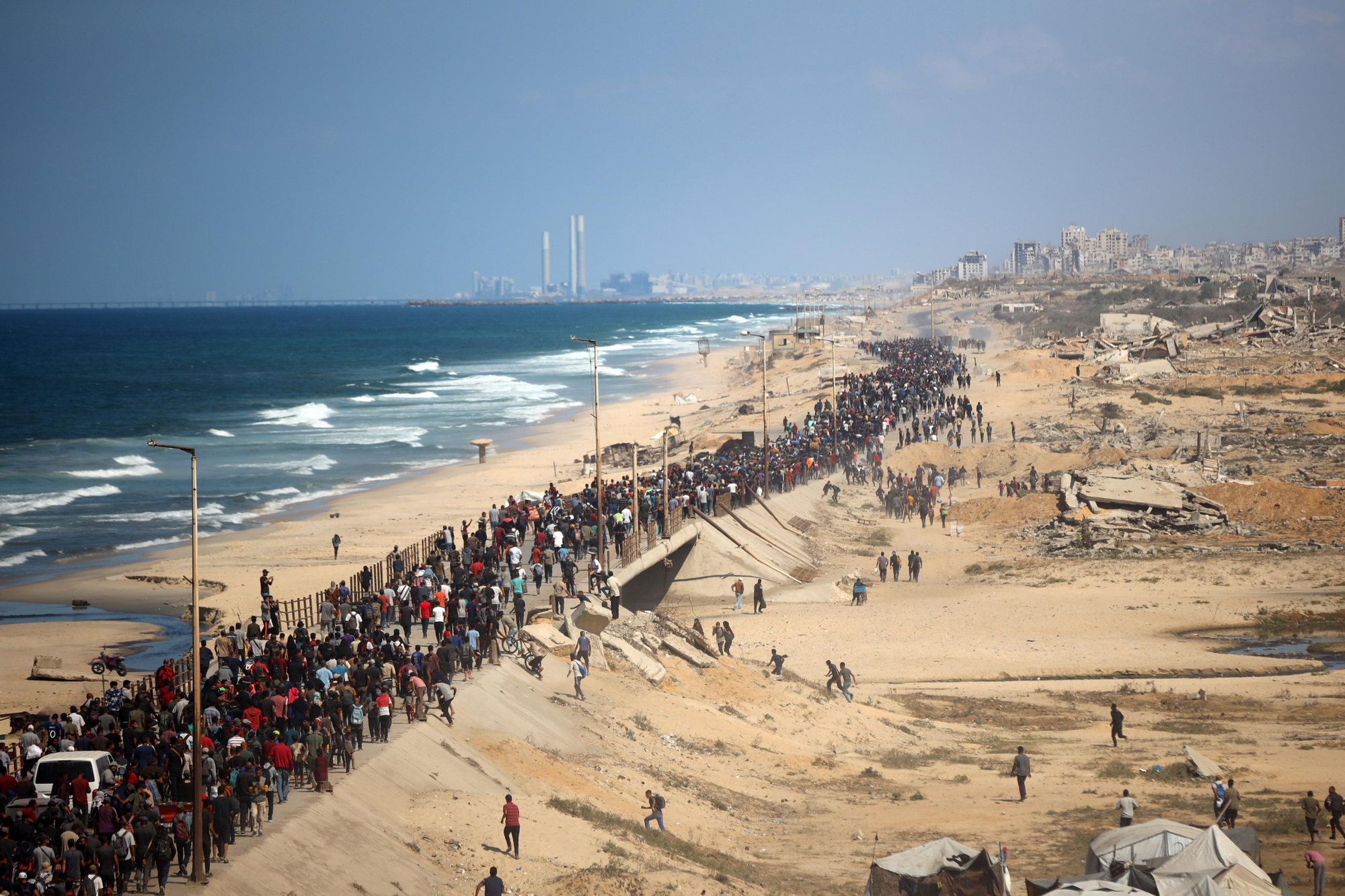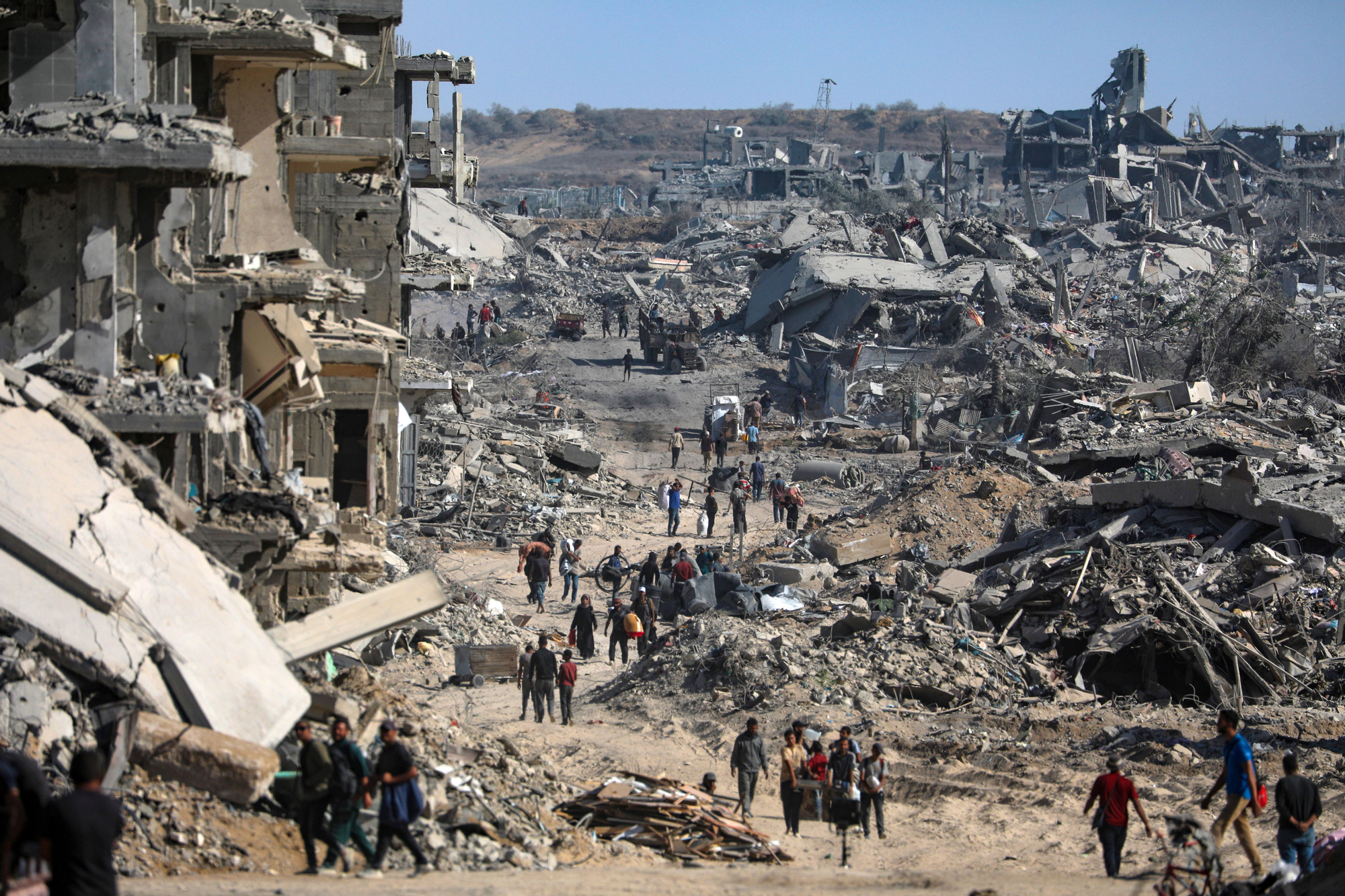A week ago, when the Gaza ceasefire came into effect, tens of thousands of Palestinians left the sprawling camps in the south to return to their homes in and around Gaza City. A shocking and hard return home for most.
A month after Israeli forces ordered them to leave their homes, the coastal road was filled with Palestinians moving north, almost all of them on foot. A human river transporting the few belongings that they had managed to save in one displacement after another.
Upon arrival, the returnees found total desolation. Large areas of the north had simply been devastated. It was no longer possible to recognize their homes and neighborhoods. Their communities had been erased from the map.
The magnitude of the demolition has put families in a terrible dilemma: stay and seek shelter in the shattered remains of their former homes or return to the tents of camps in the south, where they have a better chance of finding food and water. A decision that in turn depends on another great unknown: how long the truce will last and whether or not it will be consolidated as a lasting peace.
“I was hoping to return and find my house standing, but what I found was the opposite; I didn't even recognize the area; everything had been razed,” says Suhair al-Absi, 50, upon arriving in the Sheikh Radwan district in the northern part of Gaza City. “I could not identify the remains of my house because the rubble of all the houses was mixed, the destruction is unimaginable, something that the mind cannot understand,” adds Absi, a mother of seven children.
They had clung to their home until the last moment, when the Israeli army advanced through Gaza City in September, supposedly to eliminate any vestiges of Hamas. “We left when the tanks arrived at the entrance to our neighborhood, we could see them from the window,” Absi remembers.
They weren't just tanks. The family also watched as the “robots” blew up one house after another. They were armored and converted vehicles, loaded with explosives, that the Israel Defense Forces controlled by remote control to minimize their casualties while advancing through urban areas.
“We continued moving from one area to another in northern Gaza; but with the bombing intensifying by the hour, and with the ground invasion, we could no longer bear it. In the last week of the war we fled to the south of the Strip to protect my family,” says Absi.

“We returned to see how the area was and we found the houses completely destroyed. As soon as I saw the rubble of my house, I sat down and cried with my children,” he says. “All our memories gone, memories we had accumulated for more than 40 years, both happy and sad, memories of my children, and our best times together.”
Absi adds that the house is “absolutely impossible to repair.” “It is completely destroyed, not a single concrete column was left intact, even the stones have been shattered into small pieces,” he says. “What shocked me was the magnitude of the destruction throughout the neighborhood. I had never seen anything like it, it was as if an atomic bomb had fallen on the place.”
Makeshift shelters set up by families in their destroyed homes are seen throughout the Sheikh Radwan district. TO As walls, they have hung fabrics and blankets between the few concrete columns that are still standing. In a house where only one pillar remained, a family sat in its shade to protect themselves from the afternoon sun.
For many of the Palestinians who have returned to the rubble of their homes, their memories give them some sense of calm, a feeling of belonging. “I am going to live in the same destroyed area where I grew up, a person can only feel safe and at peace in the place where they belong,” says Absi. “We will set up a tent here, on the street, on the rubble, we have no other option; all the houses have been destroyed and we cannot live in the south because we have no family there to stay with.”

“Rebuilding our house will take me a lifetime and I may die before seeing it finished; what I think about now is how to move on with our lives and start again,” he says. “I think a lot about my children's future, there is no clear future in Gaza now, just a pile of rubble.”
In the Shuja'iya neighborhood south of Gaza City, Susan al-Shayah experienced similar disorientation when she returned to her family. “At first, I couldn't locate the exact location of the house either; the rubble was piled up and the streets were completely destroyed,” he says. “The commotion was so great that I did not have the strength to dig through the remains in search of any memory of the house, so I have not been able to rescue a single memory from under the rubble.”
The family spent four days looking for a place to pitch their tent. “For now, we just want to rest, focus on the present we live in and find a place to live, there is no time to plan for an uncertain future,” says Shayah. “I still fear that war will return because Israel always breaks its agreements, but I pray to God that peace and security are maintained and war never returns.” His family's plan is to camp in the ruins of a nearby school, where the water supply is limited. In the north there is a shortage of water.
The desalination plant in northern Gaza was destroyed by Israeli bombing in the summer and could take months to repair. The Absi family was also unable to find water in Sheikh Radwan, where the reservoir has been contaminated due to broken sewage pipes. The UN has said that the pumping station is badly damaged and that its repair depends on the arrival of components through the Gaza border crossings, access to which has not been fully guaranteed during the first week of the ceasefire.
Inside Jabalia, the district that emerged from a refugee camp north of Gaza City, Hany Abed-Rabou, 60, returned to see the state of the four family homes in the Joron neighborhood. None were still standing. “I'm not going to hide from you that I suffered a blow and lost consciousness from the shock,” he says. “Seeing your four houses turned into piles of rubble is not easy to accept,” says Abed-Rabou, who works in the construction sector.
Abed-Rabou has lost a grandson, murdered inside a shelter; and a son, who one day went out to look for food for everyone and never returned. He has toured hospitals looking for his son's body, but has found no trace of him. His plan is to pitch a tent on the ruins of one of his destroyed homes to house his surviving family members. But supplies to build shelters are in short supply. According to the UN, half of the tents going to Gaza disappeared after convoys were looted. Abed-Rabou is willing to wait: “I was born here, I grew up here and I will die here, in Jabalia.”